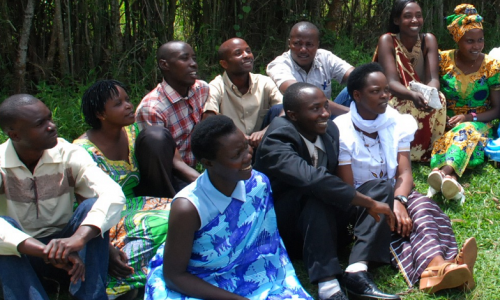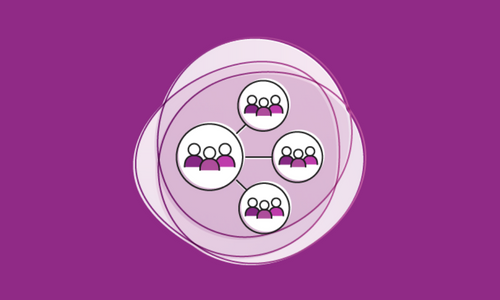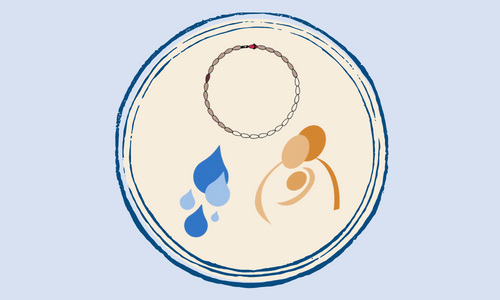Why Are Women Worldwide Not Using Contraceptives—Even Though They Don’t Want a Pregnancy?
[Originally posted on the Rewire blog here.]
Significant numbers of women worldwide don’t use birth control due to fears of side effects, negative beliefs about contraception, and because they don’t think they need it at the time. The reproductive health community must take their concerns seriously—as well as methods that rely on people knowing their own fertility.
For decades, family planning programs have helped people worldwide access contraceptive methods that meet their needs and preferences throughout life. And these programs have made tremendous strides.
But, according to a June report by the Guttmacher Institute, large proportions of heterosexual, married (and presumably sexually active) women in developing countries who don’t want to get pregnant aren’t using contraceptives. Other indicators suggest that these numbers may be even higher when women in nonmarital relationships are also counted, especially because our measures of “unmet need”—the number of fertile, sexually active women who don’t want to become pregnant but aren’t using contraception—don’t yet capture the complexity of fertility motivations or reasons for nonuse. Given the past two decades’ enormous success in expanding access to family planning, why these women are not using contraception remains something of a puzzle.
The research conducted by Guttmacher, based primarily on Demographic and Health Surveys (DHS) conducted in 52 countries, mainly in sub-Saharan Africa, provides some important clues:
- About a quarter (26 percent) of sexually active nonusers reported concerns about side effects or health risks associated with using contraception as a reason for nonuse.
- One in four (24 percent) said that they have sex so infrequently that they do not feel the need for contraception.
- One in five women reported not using contraception because they are currently breastfeeding or just had a child and think they can’t become pregnant.
- Finally, 23 percent of women in these surveys were not using contraception because they or their partner opposed its use more broadly.
Although DHS data is not able to help us explore the nuances of contraception nonuse, these findings still have implications for how the global community can improve the provision of family planning. The authors of the Guttmacher report have some suggestions for how to better serve women’s reproductive needs. In the following paragraphs, we researchers assess and build on these recommendations.
“Offer contraceptive counseling that includes accurate information about potential side effects and how to address them.” Good point. Building capacity to do just that has been a focus of provider training in the United States and abroad for many years. While there are questions about how well providers counsel women about what side effects to expect and how to manage them, it’s clear that counseling simply isn’t enough.
As the report’s authors point out, women who have previously used a method are more likely than other women to base their nonuse on concerns about health or side effects. They’re telling reproductive health providers and researchers something, and it is important that they be heard. Even though most side effects are not life-threatening and don’t pose a danger to health or future fertility (a common misperception), some women are simply not willing to put up with them. Nor should they have to. Yes, they need information about how to manage them, but women also want methods that won’t cause these side effects in the first place.
“Providers should ensure that all women are able to choose from a wide range of contraceptive options so they can select a method that best suits their needs.” Certainly, they should. Women and their partners should be able to choose among a range of permanent methods, long-acting reversible methods (LARCs), and short-term methods, including ones that address women’s concerns about side effects. And they should be able to choose based on high-quality information and options, rather than be steered toward a method that meets the desires of service providers, donors, or policymakers.
“It is crucial that women have the opportunity to switch methods if the first contraceptive they try doesn’t end up working for them.” Again, yes! Current practice in many settings is to counsel women about managing side effects and urge them to stay the course with the method they’ve chosen. This may be appropriate in many cases. But women who are not happy with their method are likely to abandon it, and if their provider has not readily offered them alternatives, they may use no method at all, with predictable results.
So what do the gaps left after these suggestions imply? Clearly, we should look at expanding the method mix to include methods with low incidence of reported side-effects. Unfortunately, some of these methods, ranging from diaphragms to vasectomy, are not well funded by donors or governments and thus are not included among the methods offered to women and men in many settings. A strong case can be made for the important role these methods can play in reducing the gap between desire to avoid pregnancy and contraception nonuse.
Other methods that are often absent from provider counseling are fertility awareness-based methods (FAMs) that rely on a woman’s knowledge about when she’s likely to get pregnant and when she’s not. These methods include the Standard Days Method® (or SDM, a method that identifies a fixed set of days in each menstrual cycle when a woman can get pregnant if she has unprotected intercourse) and the Lactational Amennorhea Method (LAM) (a short-term family planning method based on the natural effect of breastfeeding on fertility).
Both methods are classified as modern methods by the U.S. Agency for International Development and the World Health Organization. Both SDM and LAM have proven to be effective and may be appealing to women who have not used family planning before or are dissatisfied with the method they’ve been using. Furthermore, when appropriately delivered, they help women understand their pregnancy risk, including the importance of not having unprotected sex on a fertile day (even if they have sex only occasionally) and when their fertility returns postpartum. These aspects are especially important in settings where sexual activity is irregular, which as the discussion above demonstrates, is quite commonly the case.
Women in a wide variety of settings who choose FAMs report that they do so because they don’t cause side effects and don’t leave women worried that their health or future fertility will be affected. FAMs also have the additional benefit of providing women and girls (and men and boys for that matter) with critical, basic information on their bodies, including their knowledge of when women can and can’t get pregnant during their menstrual cycles and in the postpartum period, helping them better understand the relative chance of pregnancy at any given point. FAM therefore helps fill an important knowledge gap globally while providing women with a distinct alternative to methods and approaches that may not suit their needs or be available.
Of course, FAMs aren’t for everyone. As the research notes, for example, the Standard Days Method is for “women whose menstrual cycle lengths are 26–32 days.” In general, using FAMs requires cooperation from sexual partners, which often may not be forthcoming (though research shows that training on FAM can increase spousal communication and that the availability of FAM can reduce men’s opposition to contraceptive use). And all of them involve some degree of cycle monitoring.
Ultimately, no method can meet the needs of all women and their partners, and women and girls’ needs change over time. A woman who wants to delay a first birth or space pregnancies may choose the Standard Days Method, then decide that an injectable or the pill are better suited to her needs. A woman using LAM may decide to use an intrauterine device (IUD)—even before her period returns or her baby is six months old (the age at which many organizations suggest feeding babies more than breast milk and, for the mother, the time at which hormonal suppression of ovulation may be declining). It’s important to be responsive to women’s changing needs over their life course, and FAMs can be a part of this. In fact, research has found that being exposed to FAMs actually increases the use of other family planning methods over time, suggesting that women view FAMs as part of a suite of family planning options and that the broader education about fertility may lead to use of other methods as well.
Including FAMs in the range of available methods helps address the reasons why some women are not using contraception. In particular, when accompanied by high-quality and unbiased counseling, a range of methods to choose from, and support for changing methods, offering FAMs can expand the choices women and their partners have in planning their reproductive lives. That can result in very tangible improvements in their health, economic prospects, and overall empowerment. While obviously not a panacea, FAMs represent an important tool for helping us ensure that women and couples have real control over their reproductive lives.
 Where We Work
Where We Work  Press Room
Press Room  FACT Project
FACT Project  Passages Project
Passages Project  Learning Collaborative
Learning Collaborative  Search All Resources
Search All Resources  Social Norms
Social Norms  Fertility Awareness Methods
Fertility Awareness Methods